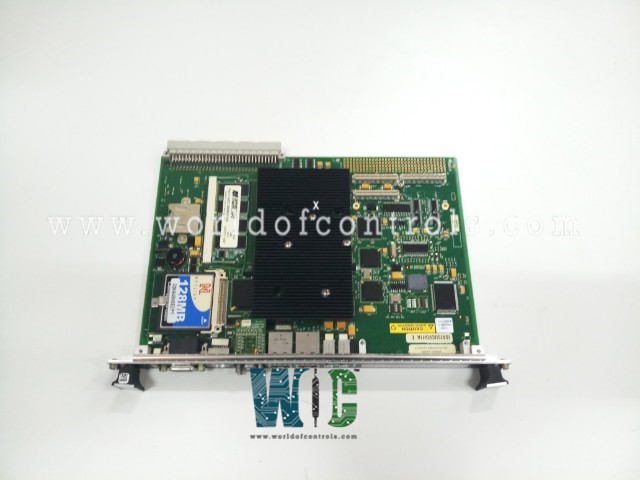
World Of Controls understands the criticality of your requirement and works towards reducing the lead time as much as possible.
IS415UCVGH1AE - VME Controller Card is available in stock which ships the same day.
IS415UCVGH1AE - VME Controller Card comes in UNUSED as well as REBUILT condition.
To avail our best deals for IS415UCVGH1AE - VME Controller Card, contact us and we will get back to you within 24 hours.
Part No.: IS415UCVGH1AE
Manufacturer: General Electric
Country of Manufacture: United States of America (USA)
Microprocessor: Intel Ultra Low Voltage Celeron 650 MHz
SDRAM: 128 MB
Compact Flash Module: 128 MB
Advanced Transfer Cache: 256 KB
Operating System: QNX
Expansion site: PMC expansion
Technology: Surface mount
Temperature: -30 to 65oC
Product Type: VME Controller Card
Availability: In Stock
Series: Mark VI
IS415UCVGH1AE is a VME Controller Card developed by GE. It is a part of Mark VI control system. The board is a high-performance, single-slot computing module designed for robust and efficient operations. It is powered by an Intel Ultra Low Voltage Celeron processor running at 650 MHz, ensuring reliable performance while maintaining low power consumption. The board is equipped with 128 MB of flash memory and 128 MB of Synchronous Dynamic Random-Access Memory (SDRAM), providing ample storage and fast access to data for seamless execution of tasks.
The WOC team is always available to help you with your Mark VI requirements. For more information, please contact WOC.
What is IS415UCVGH1AE?
It is a VME controller card developed by GE under the Mark VI series.
What are the COM ports on the UCVG board used for?
The COM ports on the board facilitate serial communication with external devices or systems. COM1 is reserved for diagnostics, while COM2 is specifically utilized for serial Modbus communication.
What is the baud rate supported by COM1 on the board?
COM1 operates at a baud rate of 9600, ensuring reliable communication for diagnostic purposes.
What configuration does COM1 use for data transmission?
COM1 employs the following configuration- 8 data bits, no parity, and 1 stop bit. This setup ensures compatibility and reliability for diagnostic tasks.
What is the primary purpose of COM2 on the board?
COM2 is primarily used for serial Modbus communication, facilitating seamless interaction with Modbus-compatible devices or systems.